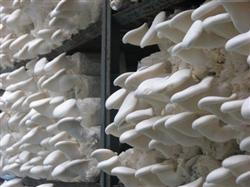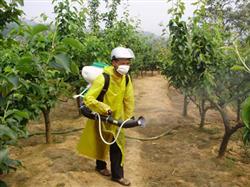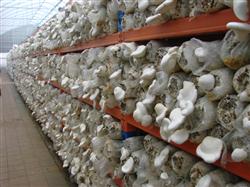Reuse of waste from Pleurotus ostreatus to cultivate Pleurotus ostreatus

Pleurotus ostreatus has developed rapidly in recent years, because there is only one crop of Pleurotus ostreatus, the nutrition has not been fully utilized. In order to make full use of these wastes, we can use the waste materials to add some excipients to produce Pleurotus ostreatus. 1. Select varieties. The bacteria with strong mycelium and exuberant vitality should be selected according to the season, the strains should be purchased from reputable scientific research institutions, and the physiological characteristics of the bacteria should be understood in detail, and the species should not be purchased blindly. 2. Prepare the culture material. (1) raw material treatment: the waste of Pleurotus ostreatus should be free of miscellaneous bacteria and insect pests, the added corncob and other excipients should also be fresh and mildew-free, and the waste of Pleurotus ostreatus should be crushed into peanut size; (2) production formula: A. 50% of Pleurotus ostreatus waste, 40% of corncob (crushed to the size of soybean kernels), 4% of wheat bran, 1% of phosphate fertilizer, 1% of gypsum, 4% of quicklime, 6% of quicklime B. 50% of Pleurotus ostreatus waste, 40% of cottonseed shell, 5% of soybean cake powder, 1% of gypsum, 4% of quicklime and 6% of quicklime. 55% of Pleurotus ostreatus waste, 35% of crop straw such as bean straw and corn straw (crushed), 2% of wheat bran, 5% of soybean cake powder, 1% of gypsum and 4% of quicklime. The above three formulations should add 0.1% of chlorpromazine and other fungicides to sterilize and disinfect, and about 0.1% of beta-cypermethrin and other insecticides to kill pests; (3) mix ingredients: first dissolve all kinds of drugs in water, and then add the main ingredients to mix well. It is appropriate to add water to 65%-70% of the material water content; (4) fermentation: the mixed material is piled into a pile with a width of 1.5 meters and an unlimited length, and the direction of the pile is better in the north-south direction. When the temperature of the surface layer of the material reaches more than 60 degrees under 20 centimeters, it can be turned for 12 hours, and the pile can be turned for 2 or 3 times, and the appropriate time is 7 to 8 days. If serious moisture evaporation is found in the pile during fermentation, 0.1%-0.2% water should be added every time the pile is turned, and insecticides can be sprayed regularly, such as phoxim, cypermethrin, avermectin, etc., and dichlorvos is prohibited. because dichlorvos is easy to make the fruit body of Pleurotus ostreatus allergic to deformity. The fermented material should be brown, hold into a ball, fall to the ground and disperse, and have a taste similar to distiller's grains, and the pH value should be 8: 9. 3. Sow seeds in bags. Plastic bags should be made of double-sided 3-wire, 250288 x 4550. large sizes should be used when the temperature is low and small sizes should be used when the temperature is high. Sowing can use mixed sowing method, the amount of bacteria is 20%; can also be used layer sowing method, bacteria can be sown 4 layers, the middle 2 layers of bacteria accounted for 40% of the total seed consumption, 60% at both ends, micropores should be made around the bag to breathe. 4. Germ management. The bacterial bag should be placed reasonably after packing, and it can be placed in a single layer when the temperature is high. The dark environment should be kept as far as possible during the germicidal period, and special attention should be paid to that the material temperature of the bag should not be too high. Generally, the material temperature of the bag is the highest about 8 to 10 days after bagging. When the temperature of the bag material reaches 33 degrees, the bag should be emptied. The temperature of the material should be checked frequently at ordinary times, and strict attention should be paid to the prevention and control of pests during the whole germicidal period, and insecticides with high efficiency and low residue should be sprayed frequently to prevent mushroom gnats, armyworm, fungus mites and jumping insects from harming mushroom bags in the later stage, especially mushroom gnats. the young of the pest is white, the mature larvae are orange, and the adults are very similar to small mushroom flies, and the incidence is particularly high in recent years, so it should be strictly controlled. About 20 days, the bacteria bag can be full, you can immediately enter the mushroom management stage. 5. Mushroom production management. Put the good bacteria bag in the mushroom room, the row spacing should be 1 meter, ensure the fresh air in the mushroom shed, give the temperature difference stimulation of more than 5 degrees, and maintain the appropriate scattered light, the mushroom can be produced in about a week. 6. Management during mushroom production. Pleurotus ostreatus should be harvested when it matures to 7: 8. During the fruiting body growth period, Pleurotus ostreatus should be sprayed frequently with disease-resistant and yield-increasing agents such as Pleurotus ostreatus and Pleurotus ostreatus. After the first harvest of mushrooms, the water should be stopped for 5-6 days, the material surface should be cleaned, properly ventilated, and the humidity should be kept at 70%-80%, so as to facilitate the production of Erchao mushrooms. Removing the bag and covering the soil is an effective measure to increase the yield. after the bag is out of the mushroom, the plastic film of the bag can be removed and buried in the pre-arranged border, the width of the border is 80cm 100cm, the depth is 30cm, the interval between the sticks should be 10cm, the aisle is reserved for 40cm and 50cm, and the gap is plugged with soil, and then filled with small water. Do not use large water during irrigation to prevent bacteria bags from drifting, and appropriate amount of nutritious fertilizer can be added to the water during irrigation.
- Prev

15 Ways to Prepare Simple Foliar Fertilizer
Foliar fertilizer spraying, also known as root topdressing, is a fertilization measure that can not be ignored in fruit production. This method saves labor and labor, and has fast effect and high utilization rate. 80% of the fertilizer can be absorbed within 24 hours. Apple, pear, hawthorn and other fruit trees in flowering spraying can improve the fruit set rate, leaves, fruits in the growth period spraying...
- Next

New techniques for bag cultivation of Pleurotus ostreatus
1. After ripening, the mycelium of Pleurotus ostreatus can not produce mushroom immediately after the mycelium grows full, it needs to go through 50-60 days of physiological maturity to produce mushroom. At this stage, the temperature should be controlled at 20-25 ℃, if the temperature is low, the time should be extended, the air relative humidity should be increased to 75%, and a certain amount of light should be increased. 2. The mycelium of Pleurotus ostreatus is about to reach.
Related
- Fuxing push coffee new agricultural production and marketing class: lack of small-scale processing plants
- Jujube rice field leisure farm deep ploughing Yilan for five years to create a space for organic food and play
- Nongyu Farm-A trial of organic papaya for brave women with advanced technology
- Four points for attention in the prevention and control of diseases and insect pests of edible fungi
- How to add nutrient solution to Edible Fungi
- Is there any good way to control edible fungus mites?
- Open Inoculation Technology of Edible Fungi
- Is there any clever way to use fertilizer for edible fungus in winter?
- What agents are used to kill the pathogens of edible fungi in the mushroom shed?
- Rapid drying of Edible Fungi

